A Major Renovation Project Is Designed for Community Interaction
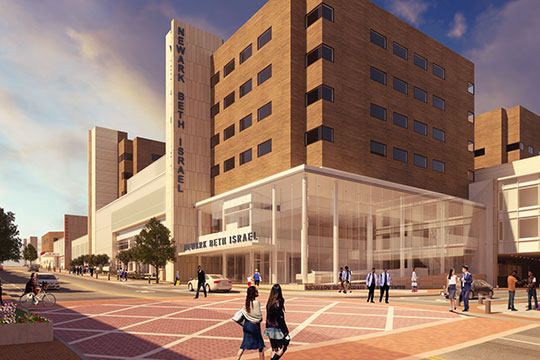
When envisioning the exterior changes that are part of a $150 million renovation project, Newark Beth Israel Medical Center (NBI) planners kept one word firmly in mind: “Welcome.”
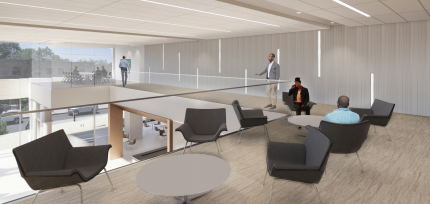
Meeting Spaces: Rooms for community use will be visible on the upper level of the lobby, showcasing one of the many ways in which the community and the hospital interact.
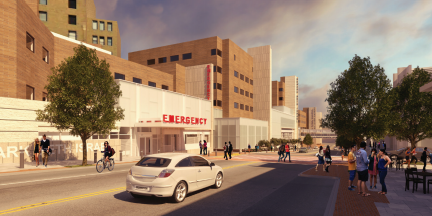
A New Approach: The new Emergency Department exterior will use textured glass to achieve welcoming transparency while maintaining patient privacy. A protective canopy has been added at the entrance to shield visitors from the elements as they are dropped off. New lighted bollards (small posts) will illuminate the approach to the building. Across the street, trees and seating areas have been added as a small oasis for pedestrians, and the sidewalk has been extended to make crossing easier.
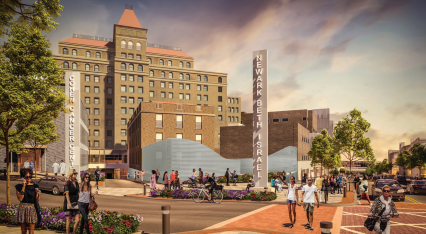
A Grand New Entrance: A plaza is planned for the corner of Schuyler and Lyons avenues, near the entrance to the Frederick B. Cohen, MD, Comprehensive Cancer and Blood Disorders Center. Benches, flowers and trees will adorn the expansive plaza, which will be a focal point for local residents and provide yet another way to share the neighborhood with the community.
“Hospital leadership told us that their goals for this project were to establish a sense of openness and safety so that visitors and people in the community will instantly feel comfortable and know this is a place where they will be welcomed and get quality health care,” says Ken Kramer, a principal at FCA, Francis Cauffman Architects.
The medical center occupies 11 acres, much of it adjoining residential neighborhoods.
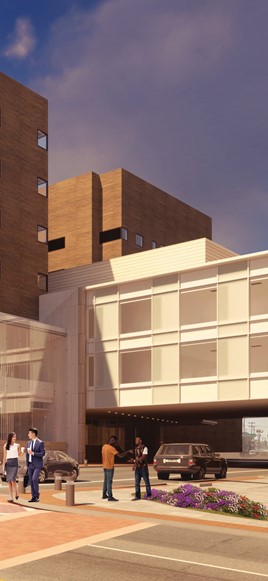
It’s a true anchor institution for the city, yet the exterior has not reflected the way the medical center and the community are entwined.
Currently, the entrance to the main lobby is difficult to see from Lyons Avenue, and the boundaries of the campus tend to be dark, walled, or fenced.
Those boundaries have been carefully considered and “softened” so that there will no longer be such stark dividing lines.
Streetscapes around NBI will include “pocket gardens” to provide refreshing breaks along with city blocks, and the number of trees on campus will increase from seven to more than 50.
These changes, along with plazas and extended sidewalks, will send the message that the hospital is not just a place where community members go for treatment or to get a prescription filled. It can be a place for other activities, such as strolling, walking a dog or sitting and relaxing.
Thoughtfully planned lighting outside of buildings will cast a glow through the night, providing secure spaces throughout the campus.
The two bus stops on campus will remain in the same locations but will be upgraded with better lighting and new plantings.
The designers have kept environmental sustainability in mind throughout the process, including low-flow bathroom fixtures, low-VOC paints, and automated window treatments to control the amount of light coming in during the day.
In addition, the new trees and planting will absorb a good amount of rainwater during storms, instead of the water hitting concrete and immediately running into the storm sewers.
The transformed campus will certainly be beautiful, but it will be much more than that. “Beautification is something you look at,” says Steven Stainbrook, an urban planning specialist and principal at FCA. “Architecture is something you experience, and in this project, everyone—staff member, patient, visitor—is equally part of that experience. The design makes clear that not only is the medical center in the neighborhood; the neighborhood is in the medical center.”
To learn about ways to support this project, visit www.newarkbethgiving.org. To learn more about this project, visit rwjbh.org/nbiexpansion.